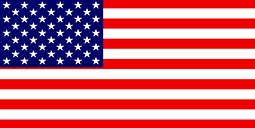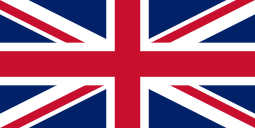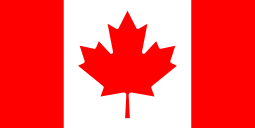Curly or Wavy: Which Hair Type Do You Have?
Hair textures come in a fascinating array, each with its unique charm and challenges. Broadly speaking, hair textures are often categorized into four main types: straight, wavy, curly, and coily. These categories are further divided into subtypes, which are specified by a numeric and alphabetic grading system ranging from 1a to 4c. While this system isn't perfect, it provides a useful framework for understanding and describing the diverse range of hair types.
Today, we embark on a journey through the world of waves and curls, exploring the distinctive subtypes of wavy and curly hair. By the end of this exploration, you will have gained a deeper understanding of the costs among different hair types, empowering you to identify your own unique hair pattern. Understanding your hair type is the first step toward providing it with the best care, ensuring that it remains healthy and radiant.

Understanding Hair Types: Wavy and Curly Hair
Hair typing is a classification system that offers a general understanding of various hair textures, helping individuals identify and care for their unique hair type. Originally proposed by Oprah's hairstylist, Andre Walker, this system categorizes hair types based on the natural curl pattern, from straight hair (type 1) to coily hair (type 4).
In this exploration, we will focus on types 2 to 4, which represent the wavy to curly spectrum of hair. Here's a brief overview:
Wavy Hair (Type 2):
Wavy hair falls between straight and curly hair, characterized by its S-shaped pattern. It is further divided into three subcategories:
· Type 2a: This subtype features a slight wave, with a texture and sheen that falls between straight and curly hair.
· Type 2b: The wave in this type forms throughout the hair in the shape of an 'S' and sticks closer to the head.
· Type 2c: This subtype is prone to frizz, has a coarser texture, and the 'S' shaped waves begin at the roots.

Curly Hair (Type 3 and 4):
Curly hair is known for its distinctive loops or spirals and is prone to dryness and frizz. It is further broken down into six subtypes:
· Type 3a: Defined by well-defined, springy, loose curls that resemble the shape of sidewalk chalk in diameter.
· Type 3b: Consists of a medium amount of curl, ranging from bouncy ringlets to tight corkscrews.
· Type 3c: Features densely packed, tighter curls, with strands that can be either kinky or very tightly curled.
· Type 4a: Full of tight coils, with a defined 'S' pattern when stretched.
· Type 4b: Less defined pattern of curls, looking more like a 'Z' as the curl bends with very sharp angles.
· Type 4c: Similar to 4b but with even more tightly coiled curls and significant shrinkage.
In the following sections, we will delve deeper into each subtype, exploring their unique characteristics to help you identify your own hair type.

Wavy Hair: A Closer Look
Wavy hair, categorized as Type 2 in the hair type system, blends characteristics of both straight and curly hair. It presents as 'S' shaped waves, offering versatility in styling. However, its predictability can vary. Let's explore the subtypes of wavy hair:
Type 2a Hair: The lightest wave in the spectrum, with a subtle 'S' shape and a fine, silky texture. The waves are loosely defined and often flat at the roots, becoming more pronounced at the mid-lengths to the ends. Type 2a hair is generally easy to handle, can be quickly straightened or curled, and tends to hold styles well. However, it can lack volume at the roots and might require products that add lift and body.
Type 2b Hair: A bit more pronounced, with waves that tend to adhere to the shape of the head. The 'S' pattern is more defined, and the texture can be medium-thick. Type 2b hair is prone to frizz, especially in humid climates, and can require some effort to straighten or curl. When properly moisturized and styled, this type can achieve a beautiful, tousled look.
Type 2c Hair: The coarsest of the wavy hair types, with the most definite 'S' pattern. The waves start at the roots, and this type is thick and voluminous. It's also the most prone to frizz among the wavy types, and humidity can significantly impact its texture. Moisturizing products, as well as those that combat frizz, can be essential for managing type 2c hair. Styling might require a bit more effort compared to the other wavy subtypes.
Understanding your type of wavy hair can guide you in choosing the best products and styling routines for maintaining healthy, vibrant waves.

Curly Hair: A Spectrum of Curls
Curly hair is characterized by its loops and coils, ranging from loose, bouncy curls to tight, densely packed coils. It requires specific care to maintain its health and vibrancy. Let's explore the subtypes of curly hair in greater detail:
Type 3a Hair: Characterized by well-defined, springy, loose curls that resemble the shape of sidewalk chalk in diameter. The curls are naturally big, loose, and often very shiny with a healthy amount of body. Type 3a curls show a definite loopy 'S' pattern and can be prone to frizz and loss of definition if not adequately moisturized and cared for.
Type 3b Hair: Consists of a medium amount of curl, ranging from bouncy ringlets to tight corkscrews. These curls are more voluminous and tighter than 3a, resembling a marker in circumference. They can range from bouncy ringlets to tight corkscrews and tend to be more prone to frizz. Hair care for type 3b hair involves a good hydration routine to keep the curls defined and bouncy.
Type 3c Hair: Often referred to as 'corkscrew curls,' with densely packed curls that create a high volume of hair. The curls are typically the circumference of a pencil or straw. This hair type tends to be higher in density and coarser than type 2 or 3 hair, leading to an increased likelihood of tangles and moisture loss.
Type 4a Hair: Full of tight coils, with a defined 'S' pattern when stretched. The curl pattern can be likened to the circumference of a crochet needle. Despite its apparent coarseness, type 4a hair can be very fragile and prone to dryness, making moisture retention especially crucial.
Type 4b Hair: Has a less defined pattern of curls and looks more like a 'Z' as the curl bends with very sharp angles. These 'Z' shaped curls are less defined and have a cotton-like feel. The hair bends with very sharp angles and often requires extra help for creating defined curls.
Type 4c Hair: Similar to 4b but with even more tightly coiled curls. Often referred to as 'kinky' or 'coily,' type 4c hair can be very fragile and maintains the most significant amount of shrinkage of all hair types. Despite its tight coiling, with appropriate care, it can showcase an incredible amount of versatility.
Understanding each curl type's unique characteristics can guide individuals in selecting appropriate products and establishing beneficial care routines, ultimately leading to healthier and more manageable curls.

The Distinction Between Wavy and Curly Hair
While wavy and curly hair share some similarities, there are distinct differences in their structure, appearance, and care requirements. Both hair types deviate from straight hair, but they occupy different positions on the hair texture spectrum. Here's a breakdown of their main characteristics and differences:
Wavy Hair (Type 2):
· Exhibits a subtle 'S' pattern, forming loose waves rather than explicit curls.
· The wave usually forms throughout the hair in the shape of an 'S' and sticks closer to the head.
· Can range from almost straight (Type 2a) to almost curly (Type 2c), with a texture and sheen ranging somewhere between straight and curly hair.
· Prone to frizz, particularly in humid environments.
Curly Hair (Type 3 and 4):
· Forms distinct loops and coils, ranging from larger, looser loops (Type 3a) to tightly coiled, zig-zag patterns (Type 4c).
· More prone to dryness and frizz than wavy hair, requiring products that provide significant hydration and moisture.
· Maintaining the definition of curls can be a challenge, often needing products that enhance and hold the curl pattern.
In essence, while wavy hair exhibits a gentle 'S' shape, curly hair is defined by its loops and coils. Both hair types have specific care requirements to maintain their health and definition. Understanding these differences can lead to a more effective hair care routine tailored to your hair's unique needs.

Hair Maintenance Tips for Curly and Wavy Hair
Regardless of whether your hair is wavy or curly, it requires specific care to maintain its health, vibrancy, and definition. Here are some general tips for maintaining curly and wavy hair, along with special care instructions for specific hair types:
General Tips:
· Hydrate: Curly and wavy hair types often struggle with dryness. Use deep conditioning masks and moisturizing hair products designed for your hair type.
· Avoid Harsh Shampoos: Sulfate-free shampoos or co-wash products can cleanse your hair without stripping it of moisture.
· Regular Trimming: To prevent split ends and keep your hair looking its best, regular trimming is essential.
· Use a Diffuser: To dry your hair quickly, use a diffuser with your blow dryer to reduce frizz and add volume.
Specific Care Instructions:
· For Wavy Hair: Consider lightweight volumizing products to add lift at the roots. Use a wide-toothed comb or your fingers to detangle wavy hair to maintain its structure and minimize frizz.
· For Curly Hair: Invest in curl-defining creams and serums to enhance the natural curl pattern. Regular deep conditioning treatments are crucial to combat dryness and frizz.
· For Type 4 Hair: Implement protective hairstyles to reduce breakage and tangles. Moisturize hair with natural oils like coconut oil or jojoba oil to seal in moisture and enhance overall health.
Maintaining your curly or wavy hair is about embracing and nurturing its natural texture and character. It's about discovering what works best for you, leading to a personalized routine that keeps your locks healthy and vibrant.

Conclusion:
Our hair is a crucial part of our identity, and understanding its unique characteristics empowers us to take better care of it. Whether your hair is subtly wavy or tightly curled, knowing your specific hair type - and the care it requires - can unlock the door to maintaining healthier, more vibrant locks. By embracing the natural texture and beauty of our hair, we enhance our personal care routines, self-expression, and confidence.
Ready to explore the versatility of curly and wavy hair? Ula Hair offers a wide range of high-quality curly human hair and wavy human hair options that can help you express your personal style and beauty. Whether you're looking to enhance your natural hair or experiment with a new look, our diverse selection of hair textures is designed to meet your needs.
In conclusion, wavy and curly hair textures are beautiful and diverse, each with its unique characteristics and care requirements. Understanding your hair type is the first step toward ensuring that your locks remain healthy, vibrant, and full of life. Embrace your natural texture, experiment with styles and products, and enjoy the journey of discovering the beauty of your curls and waves.
Related Articles:
Understanding 4B Hair: Care Tips and Styling Ideas
Dare to be Different: The Ultimate Guide to Chunky Highlights

 USD
USD EUR
EUR GBP
GBP CAD
CAD












